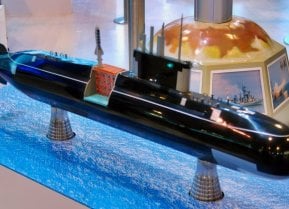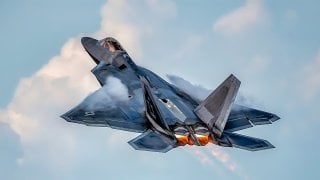Why Israel Will Never Fly the F-22 Raptor Fighter
Unlike the F-35, which is flown by other nations in the platform’s co-development group and in the North Atlantic Treaty Organization (NATO), the F-22 solely flies for the U.S.
Since Hamas carried out its barbaric massacre against the Jewish state more than two months ago, Israel has prioritized the obliteration of the Gaza-based terror group. Israel’s Defense Forces (IDF) initially carried out frequent aerial bombardments over the enclave in order to wipe out Hamas terrorists, weapons depots, and other facilities.
With precision, Israel’s fleets of F-15I and F-35I fighter platforms have performed well in the heat of war. While these American-made but highly modified platforms continue to play a critical role in Israel’s defensive and offensive strategies against the terror group, one notable U.S. platform won’t be seeking to fly the skies over Gaza. The world’s first-ever fifth-generation fighter, the F-22 Raptor, only flies for U.S. forces.
An Overview Of The Raptor
Since its introduction to service decades ago, the F-22 remains a cornerstone of air superiority for the U.S. military. In fact, foreign sales of these elite aircraft are not permitted by federal law. The sensitive and unparalleled technology that makes up the formidable platform enables each jet to feature a combination of stealth, supermaneuvrability, sensor fusion, and super cruise simultaneously. In the 1980s, the fighter was conceptualized to replace the Air Force’s aging fleets of F-15 Eagles and F-16 Fighting Falcons.
Since the Cold War was ramping up, the U.S. needed more sophisticated fighters in order to counter the Soviet Union’s own fighter development pushes.
By the time the first Raptor was developed and took its maiden flight in the late 1990s, the Cold War was dissipating rapidly followed by the dissolution of the Soviet Union. Once this imminent threat dwindled, the need and desire to produce as many F-22s as originally planned also decreased.
Once the early 2000s came about, America’s focus shifted to the War on Terror in the aftermath of the 9/11 terror attacks. At this time, the F-35 Lightening II was already in the development phase, and since this newer fighter was much cheaper to produce than its predecessor, the Joint Strike Fighter was preferred for mass production.
The F-35 vs. F-22
While the newer F-35 platform is considered by some analysts and aviation buffs to be the most technologically advanced fighter on the docket today, the F-22 still retains an edge in several areas. Notably, the Raptor has a smaller radar cross-section than its successor, making the platform even more difficult for enemy aircraft to detect. In terms of speed, the F-22 also has the F-35 beat. While the Raptor can fly at speeds reaching Mach-2.2 (2.2 times the speed of sound) powered by its Pratt & Whitney F119 engines, the F-35 can comparably only reach speeds of Mach-1.6 powered by its single Pratt & Whitney F-125 engine.
Why Won’t The U.S. Allow Foreign Clients To Procure The Raptor?
Unlike the F-35, which is flown by other nations in the platform’s co-development group and in the North Atlantic Treaty Organization (NATO), the F-22 solely flies for the U.S. When the Raptor was first produced, Congressman David Obey expressed concern that the fighters’ secretive design could be reverse engineered by enemy nations. In the late 1990s, the congressman added an amendment to the Department of Defense Appropriations Act, including the single sentence, “None of the funds made available in this Act may be used to approve or license the sale of F-22 advanced tactical fighter to any foreign government.”
A 2010 defense authorization bill that included a provision that necessitated the Department of Defense to prepare a report on the costs/feasibility of the sale of Raptor variants, however, Congress has not lifted the export ban. While preserving stealth technology is at the forefront of the decision not to allow other nations to fly the formidable fighter, quantity issues also play a part in that decision. To date, only 195 Raptor airframes have been produced and the Air Force is looking to retire quite a bit of its arsenal.

If any country would have been given the ability to procure the Raptor, it probably would have been Israel. In fact, the Jewish state was the first foreign client state outside of the F-35’s nine-nation co-development group to receive a specially modified version of the platform.

Today, Israel flies its own unique variants of several American airframes. Even though Israel is at war with a terror group that vows to destroy the Jewish state and ultimately all Western nations, the U.S. will not deliver Raptors as part of any military aid package. That doesn’t mean the U.S. does not remain the top ally of the Jewish state, however.
About the Author
Maya Carlin is an analyst with the Center for Security Policy and a former Anna Sobol Levy Fellow at IDC Herzliya in Israel. She has by-lines in many publications, including The National Interest, Jerusalem Post, and Times of Israel. You can follow her on Twitter: @MayaCarlin.


